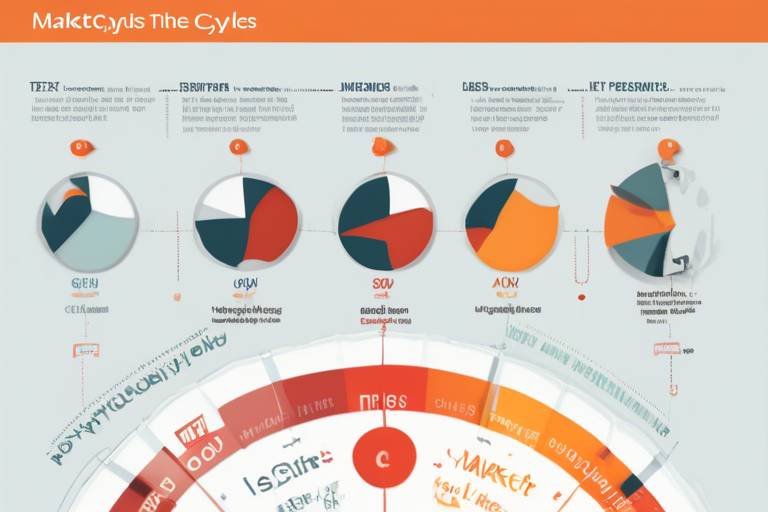How to Use Support and Resistance for Successful Trading
Welcome to the exciting world of trading! If you're looking to elevate your trading game, understanding the concepts of support and resistance is absolutely essential. These two terms are like the North Star for traders, guiding them through the often turbulent waters of market movements. But what exactly do they mean, and why should you care? In this article, we’ll dive deep into these concepts, explore their significance, and reveal strategies that can help you make better trading decisions.
So, what are support and resistance? At its core, support is a price level where a downtrend can be expected to pause due to a concentration of demand. Think of it as a safety net for prices; when they fall to this level, buyers tend to step in and push prices back up. On the flip side, resistance is where an uptrend can be expected to pause due to a concentration of selling interest. It’s like a ceiling that prices struggle to break through. Understanding these levels is crucial because they can significantly influence market movements and trader psychology.
Identifying support levels is crucial for traders looking to make informed decisions. You might ask, "How do I find these elusive levels?" Well, there are several methods to recognize them:
- Historical Price Data: Look back at past price movements; areas where prices have bounced back up can indicate support.
- Trend Lines: Draw lines connecting the lows of price movements; these can act as dynamic support levels.
- Moving Averages: These averages can also serve as support, especially the 50-day and 200-day moving averages.
By employing these techniques, traders can enhance their decision-making processes, increasing their chances of success in the market.
Just as important as support levels are resistance levels. Identifying these levels can be a game-changer. You can pinpoint resistance using various methods:
- Chart Patterns: Patterns like double tops and head and shoulders can signal resistance levels.
- Fibonacci Retracements: These can help identify potential resistance levels based on the Fibonacci sequence.
- Technical Indicators: Indicators like the Relative Strength Index (RSI) can also help in determining resistance levels.
By mastering these techniques, traders can maximize their profit potential and navigate the market with greater confidence.
Chart patterns provide visual cues that can be incredibly helpful for identifying support and resistance levels. Some common patterns include:
- Double Tops: Indicates a potential reversal at resistance.
- Double Bottoms: Signals a potential reversal at support.
- Head and Shoulders: Often indicates a strong resistance level.
Recognizing these patterns allows traders to make informed decisions, turning potential pitfalls into profitable trades.
Moving averages are not just for breakfast! They serve as dynamic support and resistance levels. Incorporating them into your trading strategies can be a game changer. For instance, when the price crosses above the moving average, it can signal a potential buy, while crossing below may indicate a sell. Different periods of moving averages, like the 20-day or 50-day, can provide different insights. So, keep an eye on those crossover signals!
Implementing effective trading strategies based on support and resistance can significantly enhance your profitability. Here are a few approaches:
- Breakout Strategies: Trade when the price breaks above resistance or below support.
- Bounce Trades: Enter trades when the price bounces off support or resistance levels.
- Stop-Loss Placement: Use support and resistance levels to set your stop-loss orders effectively.
By strategically utilizing these methods, you can better position yourself for success in the trading arena.
Volume is the unsung hero when it comes to confirming support and resistance levels. Higher trading volume at these levels can validate their strength. For instance, if the price approaches a support level with increasing volume, it’s likely that the support will hold. Conversely, if resistance is met with high volume, it may indicate a stronger likelihood of a breakout. Analyzing volume trends alongside price movements can greatly improve your trading accuracy.
Even the best traders can fall into traps when using support and resistance. Here are some common pitfalls:
- Over-reliance: Don’t put all your faith in support and resistance without considering other market factors.
- Ignoring Context: Always consider the broader market context; sometimes, support and resistance can be broken.
By being aware of these mistakes, you can refine your trading strategies and avoid unnecessary losses.
1. What is the difference between support and resistance?
Support is where prices tend to stop falling and bounce back up, while resistance is where prices tend to stop rising and reverse downwards.
2. How can I identify support and resistance levels?
You can identify these levels through historical price data, trend lines, moving averages, and various chart patterns.
3. Why is volume important in trading?
Volume helps confirm the strength of support and resistance levels, indicating whether a price point is likely to hold or break.
4. What are some common mistakes traders make with support and resistance?
Common mistakes include over-reliance on these levels and ignoring the broader market context.

Understanding Support and Resistance
Support and resistance are fundamental concepts in the realm of technical analysis, serving as crucial indicators for traders navigating the often tumultuous waters of the financial markets. But what exactly do these terms mean? In simple terms, support refers to a price level where a downtrend can be expected to pause due to a concentration of demand. Think of it as a safety net for prices; when they fall to this level, buyers step in, believing the asset is undervalued, thus preventing further declines. On the other hand, resistance is the opposite; it’s where an uptrend can stall as sellers emerge, believing the price has peaked and is due for a correction. Understanding these levels is not just academic; they can significantly influence market movements and trader psychology.
Why should traders care about support and resistance? Well, these levels act like invisible barriers that can dictate the ebb and flow of price action. Imagine a basketball game where the players are trying to score. The hoop represents resistance, while the floor represents support. Just as players must navigate these obstacles, traders must recognize and react to support and resistance levels. When prices approach these levels, they can often lead to increased volatility, making them prime opportunities for trading. However, it's essential to remember that these levels are not set in stone; they can change based on market conditions and investor sentiment.
To further illustrate the significance of support and resistance, let's consider how they can impact trader behavior. When prices hit a support level, traders may feel a sense of optimism, believing it’s a great time to buy. Conversely, when a price reaches a resistance level, fear of a downturn may prompt traders to sell. This psychological aspect is crucial; knowing how other traders might react can give you an edge. Moreover, the more times a price tests a support or resistance level, the stronger that level becomes in the eyes of traders. It’s like a wall that gets reinforced every time someone leans against it. Eventually, if enough pressure builds, that wall may crumble, leading to a breakout or breakdown.
In conclusion, understanding support and resistance is like having a map in a dense forest. It helps traders navigate through the complexities of market movements and make informed decisions. By recognizing these critical levels, traders can better anticipate price action and develop strategies that align with market dynamics. As we delve deeper into this article, we’ll explore methods to identify these levels and how to effectively incorporate them into your trading strategies.

Identifying Support Levels
Identifying support levels is absolutely crucial for traders who want to enhance their decision-making process and ultimately boost their profitability. Think of support levels as the safety net for prices; they are the points on a chart where the price tends to stop falling and may even bounce back up. But how do we pinpoint these important levels? Well, there are several methods that traders can use, and each has its own unique advantages.
One of the most straightforward ways to identify support levels is by analyzing historical price data. By looking back at past price movements, traders can spot where the price has previously bounced off a certain level. For instance, if a stock has consistently rebounded at $50 over the last few months, this price point can be considered a strong support level. But remember, just because a price has bounced off a level before doesn’t mean it will do so again. Always keep an eye on market conditions!
Another effective technique for identifying support levels is through the use of trend lines. By drawing a line connecting the lows of the price movements, traders can visually see where the price has historically found support. This method not only helps in identifying static support levels but also reveals the trend direction. For example, if the trend line is sloping upwards and the price approaches it, there’s a good chance it will act as a support level. It’s like having a guidepost that helps navigate the often turbulent waters of trading.
Moving averages also serve as dynamic support levels. When you plot a moving average on your chart, it can act as a support level, especially when the price is above the moving average line. The 50-day moving average is particularly popular among traders. If the price approaches this line, it often bounces back, indicating that traders are willing to buy at this level. However, it’s important to note that moving averages can lag behind the actual price, so using them in conjunction with other methods is advisable.
To further enhance your ability to identify support levels, consider combining multiple methods. For instance, if you identify a historical support level at $50 and notice that it coincides with a moving average, this convergence strengthens the case for that level being a robust support point. It’s like having multiple friends backing you up when you’re about to make a big decision; the more support you have, the more confident you can be!
In summary, identifying support levels is not just about finding numbers on a chart; it’s about understanding market psychology and price behavior. By utilizing historical price data, trend lines, and moving averages, traders can make more informed decisions. Remember, the market is always changing, so continuously reassessing these levels is key to staying ahead of the game.
- What is a support level? A support level is a price point on a chart where the price tends to stop falling and may bounce back up.
- How can I identify support levels? You can identify support levels by analyzing historical price data, using trend lines, and applying moving averages.
- Why is it important to identify support levels? Identifying support levels helps traders make informed decisions and improve their chances of profitability.
- Can support levels change? Yes, support levels can change based on market conditions and price movements.

Identifying Resistance Levels
Identifying resistance levels is a critical skill that every trader should master. These levels act as invisible ceilings in the market, where price tends to stall or reverse. Think of resistance as a strong wall that the price struggles to break through. When traders recognize these levels, they can make more informed decisions about when to enter or exit trades. But how do you pinpoint these elusive levels? There are several methods you can use to identify resistance.
One effective way to identify resistance levels is by examining historical price data. By looking at past charts, traders can spot areas where the price has previously encountered obstacles. For instance, if the price repeatedly fails to rise above a certain level, that level is likely a resistance point. This is akin to a basketball player trying to dunk but hitting the rim repeatedly; eventually, they learn that they need to adjust their approach.
Another useful technique involves using chart patterns. Patterns like double tops and head and shoulders can provide visual cues that indicate potential resistance levels. When traders see these formations, they can anticipate that the price may struggle to move higher. Additionally, Fibonacci retracement levels can also serve as powerful indicators of resistance. By applying the Fibonacci tool to a recent price movement, traders can identify key levels where price may reverse or stall.
Moreover, technical indicators such as the Relative Strength Index (RSI) and Moving Average Convergence Divergence (MACD) can provide insights into resistance levels. For example, if the RSI indicates that a stock is overbought, it may signal that the price is approaching a resistance level. This is like a crowded elevator; when too many people are inside, it’s harder for anyone else to get in. Similarly, when the price is overextended, it may struggle to push past resistance.
To enhance your understanding, let’s look at a simple table that summarizes some common methods for identifying resistance levels:
| Method | Description |
|---|---|
| Historical Price Data | Identify previous price points where the market has reversed. |
| Chart Patterns | Use patterns like double tops and head and shoulders to spot resistance. |
| Fibonacci Retracement | Apply Fibonacci levels to find potential resistance points in a trend. |
| Technical Indicators | Utilize RSI and MACD to gauge market conditions and resistance potential. |
Lastly, it’s essential to remember that resistance levels are not set in stone. They can change over time as market conditions evolve. A level that once acted as resistance may turn into support if the price breaks through it decisively. This phenomenon is often referred to as "role reversal." As you become more experienced in trading, you’ll start to recognize these shifts and adjust your strategies accordingly.
In conclusion, identifying resistance levels is a blend of art and science. By employing a variety of techniques and remaining aware of market dynamics, you can enhance your trading strategies and improve your chances of success. Remember, the key is to stay flexible and adapt to the ever-changing market landscape!

Chart Patterns for Support and Resistance
When it comes to trading, chart patterns are like the breadcrumbs that lead you through the forest of market movements. These patterns not only help you identify potential support and resistance levels but also offer insights into the psychology of traders. Understanding these patterns can elevate your trading game, allowing you to make more informed decisions. Let's dive into some of the most common chart patterns that traders rely on.
One of the most recognizable patterns is the double top. Picture this: the price reaches a peak, retreats, and then climbs back up to that same peak again, only to fall once more. This pattern signals a potential reversal, indicating that the price may struggle to break through that resistance level. On the flip side, a double bottom is its counterpart. When the price dips to a low point, rebounds, and then returns to that low again, it hints at a potential upward reversal. It's like a spring being compressed; once it’s released, it can shoot up!
Another significant pattern is the head and shoulders. This pattern can be a bit trickier to spot but is incredibly powerful. It consists of three peaks: a higher peak (the head) flanked by two lower peaks (the shoulders). This formation often suggests that a bullish trend is about to reverse into a bearish trend. Conversely, the inverse head and shoulders pattern indicates a potential bullish reversal after a downtrend, with the head being the lowest point surrounded by higher shoulders.
In addition to these patterns, traders often look at trend lines to gauge support and resistance. A trend line drawn along the lows of an uptrend can act as a support level, while a trend line drawn along the highs of a downtrend can serve as resistance. These lines create visual boundaries that traders can use to make decisions. However, it’s essential to remember that these patterns and lines are not foolproof; they require confirmation through other indicators or volume analysis.
To summarize, chart patterns are not just squiggles on a chart; they are vital tools that can help you navigate the market. By recognizing patterns like double tops, double bottoms, and head and shoulders, you can gain insight into potential price movements. Incorporating these patterns into your trading strategy can significantly enhance your ability to identify support and resistance levels, ultimately leading to more successful trades.
- What is the significance of chart patterns in trading? Chart patterns help traders identify potential support and resistance levels, offering insights into market psychology and potential price movements.
- How can I effectively use chart patterns? By recognizing patterns such as double tops, double bottoms, and head and shoulders, traders can make informed decisions about entry and exit points.
- Are chart patterns always reliable? While chart patterns can provide valuable insights, they should be used in conjunction with other indicators and analysis methods for the best results.

Using Moving Averages
When it comes to trading, moving averages are like your trusty compass in a dense forest. They help you navigate through the chaotic price movements and provide a clearer picture of the market's direction. A moving average smooths out price data by creating a constantly updated average price, which can help traders identify trends over a specific period. Think of it as a way to filter out the noise and focus on the underlying trend.
There are two main types of moving averages that traders often use: the simple moving average (SMA) and the exponential moving average (EMA). The SMA is calculated by taking the average of a set number of prices over a specific period, while the EMA gives more weight to recent prices, making it more responsive to new information. This responsiveness can be crucial in fast-moving markets where every second counts. So, which one should you use? It often depends on your trading style and the timeframe you’re focusing on.
For instance, short-term traders might prefer the EMA because it reacts quickly to price changes, allowing them to capitalize on rapid movements. On the other hand, long-term traders might stick with the SMA for its stability and reliability over time. However, both moving averages can serve as dynamically changing support and resistance levels. When the price is above the moving average, it can act as a support level, while when it's below, it can serve as resistance.
Incorporating moving averages into your trading strategy can be incredibly beneficial. Here are a few ways you can utilize them:
- Crossover Signals: A common strategy is to look for crossover points between different moving averages. For example, when a short-term EMA crosses above a long-term SMA, it can signal a potential upward trend, while the opposite crossover might indicate a downward trend.
- Trend Confirmation: Use moving averages to confirm the direction of the trend. If the price is consistently above the moving average, it indicates a bullish trend; if below, a bearish trend.
- Dynamic Support and Resistance: As previously mentioned, moving averages can act as dynamic support or resistance levels. Traders often watch how the price interacts with these averages to make informed decisions.
To illustrate the effectiveness of moving averages, let’s take a look at a simple table that summarizes their key characteristics:
| Type of Moving Average | Calculation Method | Responsiveness | Best Used For |
|---|---|---|---|
| Simple Moving Average (SMA) | Average of prices over a set period | Less responsive | Long-term trends |
| Exponential Moving Average (EMA) | Weighted average with more emphasis on recent prices | More responsive | Short-term trends |
In conclusion, using moving averages effectively can greatly enhance your trading strategy. They provide clarity in a world of chaos and help you make more informed decisions. Remember, though, that while moving averages are powerful tools, they are not foolproof. Always combine them with other indicators and analysis methods to refine your trading approach.
What is the best moving average to use? The best moving average depends on your trading style. Short-term traders often prefer EMAs for their responsiveness, while long-term traders may favor SMAs for stability.
Can moving averages predict market reversals? While moving averages can indicate potential trend changes, they should not be solely relied upon for predicting reversals. It's best to use them in conjunction with other indicators.
How do I determine the right period for moving averages? The right period often depends on your trading strategy. Shorter periods (like 5 or 10 days) are better for day trading, while longer periods (like 50 or 200 days) are more suited for long-term trading.

Trading Strategies Utilizing Support and Resistance
When it comes to trading, leveraging support and resistance levels can be a game-changer. Imagine you're navigating through a dense forest; knowing where the clear paths are (support) and where the thickets are (resistance) can make your journey smoother and more successful. In trading, these levels help you identify potential entry and exit points, allowing you to make informed decisions and enhance your profitability.
One popular strategy is the breakout strategy. This involves identifying a key resistance level and placing a buy order just above it. The idea is that once the price breaks through this resistance, it often continues to rise as new buyers enter the market. Conversely, if you're looking at support levels, a common tactic is to place a sell order just below a support line, anticipating that the price will drop further if it breaks through. However, it’s crucial to confirm the breakout with other indicators, such as volume, to avoid false signals.
Another effective approach is the bounce trade. This strategy capitalizes on the tendency of prices to bounce back from support or resistance levels. For instance, if the price approaches a well-established support level and shows signs of reversing, traders might enter a long position, betting that the price will rise again. It's like catching a ball that’s about to hit the ground; you want to be ready to spring into action at the right moment. To enhance the effectiveness of this strategy, consider using additional indicators like oscillators to confirm the reversal.
Moreover, placing stop-loss orders is essential when utilizing support and resistance levels. A stop-loss order is a safety net that helps limit potential losses. For example, if you enter a trade at a support level, you might set your stop-loss just below that level. This way, if the market moves against you, your losses are minimized. Think of it as having a parachute while skydiving; it ensures you have a backup plan if things go awry.
To illustrate how these strategies can be applied, here’s a simple table summarizing the key strategies and their characteristics:
| Strategy | Description | Best Used When |
|---|---|---|
| Breakout Strategy | Buying above resistance or selling below support | Market is trending strongly |
| Bounce Trade | Buying at support or selling at resistance | Market shows signs of reversal |
| Stop-Loss Placement | Setting stop-loss orders just below support or above resistance | To manage risk effectively |
In addition to these strategies, it’s important to remember that the context of the market plays a significant role. For instance, during strong market trends, support and resistance levels can shift, and what was once a reliable level might no longer hold. Therefore, staying adaptable and continuously analyzing the market is crucial for successful trading.
In conclusion, utilizing support and resistance in your trading strategies is not just about recognizing these levels; it’s about understanding how to act on them. By employing breakout strategies, bounce trades, and proper stop-loss placements, you can enhance your trading decisions and increase your chances of success. Remember, trading is as much an art as it is a science, so practice these strategies and refine your approach over time.
- What are support and resistance levels? Support levels are price points where a stock tends to stop falling and may bounce back up, while resistance levels are points where a stock tends to stop rising and may fall back down.
- How can I identify support and resistance levels? You can identify these levels using historical price data, trend lines, moving averages, and chart patterns.
- Why are support and resistance important in trading? They help traders make informed decisions about entry and exit points, manage risk, and understand market psychology.

The Role of Volume in Support and Resistance
When diving into the world of trading, understanding the role of volume in relation to support and resistance is like having a secret weapon in your trading arsenal. Volume refers to the number of shares or contracts traded in a security or market during a given period. It's not just about price movements; volume adds depth to our analysis, providing insights that price alone cannot offer. Think of it this way: if price is the heartbeat of the market, then volume is the pulse that tells us how strong that heartbeat is.
Why is volume so important? Well, consider this: a price level that has been tested multiple times with high volume is generally seen as a stronger support or resistance level. This is because it indicates that many traders are willing to buy or sell at that price, creating a significant barrier. Conversely, if a price breaks through a support or resistance level with low volume, it might not be as reliable. It's like a crowd cheering for a team; if the cheers are loud, the support is strong. If it's just a few scattered claps, you might want to reconsider your strategy.
To illustrate the relationship between volume and price levels, let’s look at a simple table that outlines how volume can confirm or negate support and resistance levels:
| Volume Level | Price Action | Interpretation |
|---|---|---|
| High Volume | Price bounces off support | Strong support level confirmed |
| High Volume | Price hits resistance | Strong resistance level confirmed |
| Low Volume | Price breaks support | Weak break, potential for a false signal |
| Low Volume | Price breaks resistance | Weak break, caution advised |
In addition to confirming levels, volume can also be used to identify potential reversals. For example, if a stock approaches a known resistance level and volume spikes, it could indicate that traders are eager to sell, potentially leading to a price drop. On the other hand, if a stock is nearing a support level and volume increases significantly, it might suggest that buyers are stepping in, ready to push the price back up.
Moreover, combining volume analysis with other indicators can enhance your trading strategy. For instance, using volume in conjunction with moving averages or RSI (Relative Strength Index) can provide a more comprehensive view of market conditions. When you see a price breakout accompanied by high volume and confirmation from these indicators, it’s a powerful signal that can lead to successful trades.
In summary, never underestimate the power of volume in your trading decisions. It can provide critical insights that help you understand market sentiment and validate your strategies. By paying close attention to volume trends alongside support and resistance levels, you can significantly improve your trading accuracy and overall profitability.
Q: How do I know if the volume is high or low?
A: Volume can be considered high or low relative to its historical averages. Most trading platforms provide volume indicators that can help you compare current volume levels to past performance.
Q: Can I rely solely on volume for trading decisions?
A: While volume is an essential factor, it should not be the only consideration. Always use it in conjunction with other technical indicators and market analysis for the best results.
Q: What is the best way to analyze volume?
A: Look for patterns in volume spikes and declines, and consider how they correspond with price movements. Using volume indicators like the On-Balance Volume (OBV) can also be beneficial.

Common Mistakes to Avoid
Trading can be an exhilarating journey, but it’s riddled with potential pitfalls—especially when it comes to understanding support and resistance. Many traders, both novice and experienced, often stumble into common traps that can derail their strategies and lead to losses. One of the biggest mistakes is the over-reliance on support and resistance levels. While these levels are fundamental, treating them as absolute barriers can be misleading. Markets are dynamic; they don’t always respect these lines, and failing to adapt can cost you dearly.
Another frequent error is ignoring the context of the market. For instance, a support level may seem solid based on historical data, but if the overall market sentiment is bearish, it might not hold. Think of it like a dam holding back a flood; if the water pressure is too high, even the strongest dam can break. Therefore, it’s crucial to consider other factors such as market news, economic indicators, and overall trends before making decisions based solely on support and resistance.
Additionally, many traders neglect to incorporate volume analysis into their strategies. Volume is like the heartbeat of the market; it tells you how strong a movement is and can confirm whether a support or resistance level will hold. For instance, if a price breaks through a resistance level with high volume, it’s a strong signal that the trend may continue. Conversely, if it breaks with low volume, it could indicate a false breakout. Ignoring this can lead to misjudgments in your trading decisions.
Moreover, setting stop-loss orders too close to support or resistance levels is another common mistake. While it’s wise to protect your capital, placing your stop-loss right at these levels can result in premature exits. Markets can be volatile, and price movements can trigger your stop-loss only to reverse shortly after. Instead, consider placing your stop-loss a bit further away to give your trades some breathing room.
Lastly, failing to review and adjust your strategies regularly can be detrimental. The market is constantly evolving, and what worked yesterday might not work today. It’s essential to analyze your trades, learn from your mistakes, and adjust your approach. This iterative process helps you refine your understanding of support and resistance, making you a more adaptable and successful trader.
In summary, avoiding these common mistakes can significantly enhance your trading effectiveness. Remember, trading is not just about following rigid rules; it’s about understanding the market's nuances and being flexible in your approach. By keeping these tips in mind, you can navigate the trading waters more confidently and make informed decisions that align with your financial goals.
- What is the most common mistake traders make with support and resistance?
Over-relying on these levels without considering market context is a prevalent mistake. - How can I confirm support and resistance levels?
Analyzing volume trends alongside price movements can help validate these levels. - Should I always place stop-loss orders at support or resistance levels?
No, placing them too close can lead to premature exits; give your trades some room. - How often should I review my trading strategies?
Regularly; the market changes, and so should your strategies.
Frequently Asked Questions
- What are support and resistance levels?
Support and resistance levels are key concepts in trading that indicate price points on a chart where the price tends to stop and reverse. Support is the price level where buying interest is strong enough to overcome selling pressure, while resistance is where selling interest outweighs buying pressure.
- How can I identify support and resistance levels?
You can identify support and resistance levels using various methods, such as analyzing historical price data, drawing trend lines, and using moving averages. Additionally, chart patterns like double tops and bottoms can provide visual cues for these critical levels.
- Why are support and resistance important in trading?
Support and resistance levels are essential because they help traders make informed decisions. By understanding where these levels are, traders can better predict potential price movements, set entry and exit points, and manage risk effectively.
- What trading strategies can I use with support and resistance?
There are several trading strategies you can implement using support and resistance, such as breakout strategies, where you enter a trade once the price breaks through a support or resistance level, and bounce trades, where you buy at support or sell at resistance.
- How does volume relate to support and resistance?
Volume plays a crucial role in confirming support and resistance levels. A high trading volume at these levels can indicate strong buying or selling interest, which can validate the significance of the support or resistance level and improve the accuracy of your trading decisions.
- What are some common mistakes to avoid when using support and resistance?
Common mistakes include over-relying on support and resistance levels without considering the broader market context, ignoring the impact of news events, and failing to use stop-loss orders to manage risk. It's essential to combine these levels with other analysis methods for better results.



















